Home>Interior Design>Small Backyard Landscaping Ideas: 15 Designs For Tiny Spaces
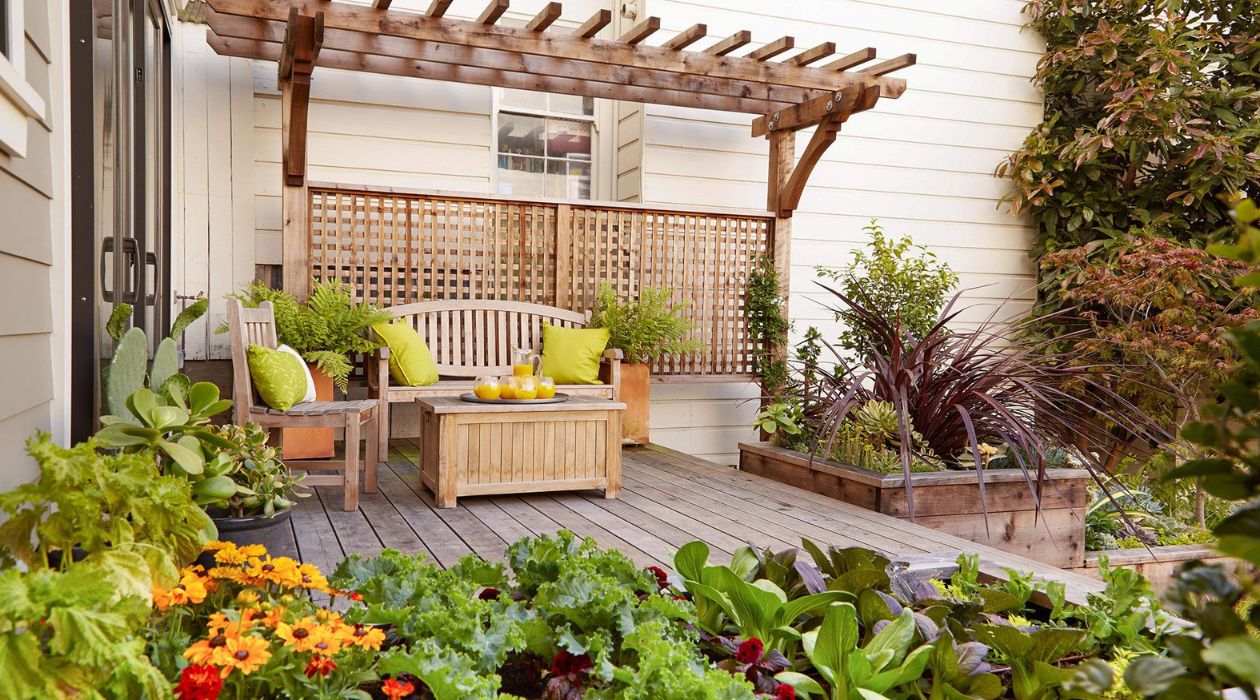

Interior Design
Small Backyard Landscaping Ideas: 15 Designs For Tiny Spaces
Modified: January 6, 2024
Looking for small backyard landscaping ideas? Discover 15 stunning designs for tiny spaces to transform your outdoor area. Enhance your interior design with these creative solutions.
(Many of the links in this article redirect to a specific reviewed product. Your purchase of these products through affiliate links helps to generate commission for Storables.com, at no extra cost. Learn more)
Introduction
Welcome to the world of small backyard landscaping! If you have a tiny outdoor space, don’t worry – you can still create a beautiful and functional oasis. Whether you have a small balcony, a compact patio, or a petite backyard, there are numerous design ideas that can transform your limited space into a stylish and inviting area.
Small backyard landscaping is all about maximizing every inch of available space while also incorporating elements that reflect your personal style. From vertical gardens to compact water features, there are countless options to choose from. In this article, we will explore 15 designs specifically tailored for small outdoor areas, each offering a unique approach to transforming your backyard.
These ideas will not only help you make the most of your limited space but will also inspire creativity and bring a sense of relaxation to your outdoor environment. So, grab your gardening gloves and let’s dive into the world of small backyard landscaping!
Key Takeaways:
- Transform your small backyard into a stunning oasis with vertical gardens, compact water features, and creative lighting. Embrace innovative design ideas to maximize space and create a visually appealing outdoor environment.
- Embrace the tranquility of minimalist Zen gardens and the practicality of artificial grass in your small backyard. From rooftop gardens to privacy screens, explore creative solutions to elevate your outdoor space.
Vertical Gardens
If you’re short on horizontal space, why not think vertically? Vertical gardens are a fantastic way to add greenery to your small backyard without sacrificing precious ground area. By utilizing walls, fences, or even hanging structures, you can create a stunning vertical garden that adds depth and visual interest to your outdoor space.
There are several creative ways to incorporate vertical gardens into your small backyard. One option is to install wall-mounted planters or modular systems that allow you to customize the arrangement of plants. This not only adds a touch of greenery but also acts as a natural divider, creating a sense of privacy and intimacy.
Another idea is to hang pots or baskets from fences or pergolas. This adds a charming and whimsical touch to your backyard while utilizing the vertical space effectively. You can mix and match different plant varieties to create a vibrant and eye-catching display.
If you’re feeling adventurous, you can even explore the concept of a living wall. A living wall is a vertical structure covered in plants that can serve as a focal point in your small backyard. It not only adds beauty but also helps improve air quality by filtering pollutants.
When choosing plants for your vertical garden, consider their light requirements and growth habits. Opt for plants that thrive in vertical orientations, such as ferns, succulents, and trailing vines. This will ensure that your vertical garden stays lush and vibrant throughout the seasons.
Vertical gardens not only maximize your space but also bring a sense of tranquility and serenity to your small backyard. So, go ahead and give your walls a green makeover!
Container Gardening
Container gardening is a versatile and practical option for small backyard landscaping. It allows you to create a lush garden even in the tiniest of spaces. Whether you have a balcony, patio, or small backyard, container gardening offers endless possibilities.
The key to successful container gardening is choosing the right pots and plants. Select containers that are suitable for the size of your space and complement your overall aesthetic. You can opt for traditional clay pots, modern fiberglass planters, or even repurpose old household items like buckets or wooden crates.
When it comes to plant selection, consider the size and growth habits of the plants. Choose a mix of tall, medium, and low-growing plants to add depth and dimension to your container garden. Mix and match different colors, textures, and foliage types to create an eye-catching display.
One of the advantages of container gardening is the flexibility it offers. You can easily move the pots around to create different configurations or adjust their placement based on the sunlight requirements of the plants. This allows you to make the most of the available sunlight and create optimal growing conditions.
In addition to traditional flower and foliage plants, you can also grow herbs, vegetables, and even small fruit trees in containers. This not only adds a functional element to your small backyard but also allows you to enjoy the benefits of homegrown produce.
Don’t forget about the importance of proper drainage when selecting pots for container gardening. Ensure that the containers have drainage holes and use well-draining potting soil to prevent waterlogging and root rot.
Container gardening is a fantastic way to bring nature into your small backyard while also adding a touch of personal style. With careful plant selection and creative use of containers, you can create a thriving garden oasis in even the smallest of spaces.
Miniature Ponds
Who says you need a large backyard to enjoy the peaceful ambiance of a water feature? With miniature ponds, you can bring the soothing sounds of water into your small outdoor space.
A miniature pond is a small-scale version of a traditional pond that fits perfectly in tight spaces. It can be as simple as a shallow container or as elaborate as a custom-built structure. The choice is yours based on the available space and your desired aesthetic.
To create a miniature pond, start by selecting a suitable container or basin. It can be a ceramic bowl, a whiskey barrel, or even an old bucket. Just ensure that it is watertight and able to hold water without leaking. You can also add a small pump or fountain to create movement and enhance the visual appeal.
Once you have your container ready, it’s time to add water and aquatic plants. Choose small and compact water plants such as water lilies, lotus, or floating plants like water lettuce. These plants not only add beauty but also help oxygenate the water and provide habitat for beneficial insects.
Don’t forget to consider the placement of your miniature pond. Ensure that it receives adequate sunlight for the plants to thrive but also consider the safety of nearby elements like electrical outlets or access for maintenance.
Miniature ponds can be further enhanced with the addition of decorative elements like rocks, pebbles, or even tiny sculptures. These can add visual interest and create a natural and harmonious look.
One of the advantages of miniature ponds is their low maintenance requirements. With limited space, you won’t have to worry about excessive cleaning or invasive plant growth. However, regular monitoring of water levels and cleaning any debris is still necessary to keep your miniature pond looking its best.
With a miniature pond in your small backyard, you can create a serene and tranquil space where you can unwind and enjoy the beauty of nature. So, dive into the world of miniature ponds and experience the joys of a water feature, no matter the size of your outdoor area!
Hanging Planters
Hanging planters are a fantastic solution for adding greenery to your small backyard without taking up valuable floor space. These versatile planters can be suspended from different structures like pergolas, trellises, or even sturdy tree branches, allowing you to create a stunning display of cascading plants.
One of the great advantages of hanging planters is their ability to add vertical interest and create a lush and vibrant atmosphere. You can choose from a wide variety of hanging planters, from traditional macrame styles to modern metal or ceramic designs. Select a style that complements your overall outdoor decor and personal taste.
When it comes to choosing plants for hanging planters, consider trailing or cascading varieties that will gracefully spill over the edges. Some popular choices include trailing vines like pothos or ivy, colorful and compact flowers like petunias or lobelia, or even herb varieties like trailing rosemary or mint.
Before hanging your planters, ensure that you have sturdy support structures in place. This will ensure the safety and stability of the planters, especially during windy conditions. If necessary, consult with a professional or invest in strong hooks or brackets that can handle the weight of the planters.
When caring for hanging planters, it’s essential to provide adequate water and ensure proper drainage. Hanging planters typically dry out more quickly than traditional pots, so regular watering is necessary. However, be careful not to overwater, as excessive moisture can lead to root rot.
Add some creativity to your hanging planters by mixing and matching different plant varieties and colors. Combining plants with contrasting foliage or flower colors can create a visually stunning and captivating display. Feel free to experiment and let your creativity shine!
In addition to providing greenery, hanging planters can also act as natural dividers or screens, helping to create a sense of privacy in your small backyard. They are also a great option if you have limited space on the ground but still want to enjoy the benefits of a lush garden.
So, get ready to elevate your small backyard landscaping with the beauty and charm of hanging planters. They will add a touch of elegance and bring your outdoor space to life!
Multi-level Decking
If you’re looking to maximize the space in your small backyard and create distinct zones for different activities, multi-level decking is a perfect solution. By incorporating multiple levels of decking, you can add depth and interest to your outdoor space while creating functional areas for dining, lounging, and entertaining.
The key to successful multi-level decking is careful planning and design. Start by assessing the layout of your backyard and identifying the different areas you want to create. This could include an outdoor dining area, a cozy seating nook, or even a small garden space.
Once you’ve determined the zones, consider the dimensions and proportions of each level of decking. Aim for a seamless transition between the levels by using consistent materials, colors, and design elements. This will help create a cohesive and visually appealing outdoor space.
When it comes to materials, opt for low-maintenance options like composite decking or treated wood that can withstand outdoor elements. Choose materials that are durable and can handle foot traffic without too much maintenance and upkeep.
Incorporating built-in seating or storage can be beneficial in a small backyard. Consider integrating benches or storage compartments into the design of the decking levels. This will not only provide additional seating or storage space but also help save room and keep your backyard organized.
To further enhance the multi-level decking design, consider incorporating lighting elements. Outdoor lighting can create a warm and inviting ambiance, extending the usability of the space into the evening hours. Choose lighting fixtures that blend well with the overall design and provide adequate illumination for each level.
Lastly, don’t forget to add some finishing touches to make your multi-level decking aesthetically pleasing. Consider adding potted plants, decorative elements, or outdoor rugs to add color and personality to each level. These details will elevate your deck and create a welcoming and inviting outdoor environment.
Multi-level decking offers not only functional benefits but also the opportunity to create an interesting and visually appealing outdoor space. So, embrace the versatility and design possibilities of multi-level decking to transform your small backyard into a stunning retreat!
Garden Trellis
A garden trellis is a wonderful addition to any small backyard as it adds vertical interest and serves as a support structure for climbing plants. Trellises not only provide a unique focal point but also maximize your space by utilizing the vertical plane.
When choosing a garden trellis, consider the size and style that will complement your outdoor space. Trellises come in a variety of materials such as wood, metal, or even vinyl. Select a trellis that aligns with your personal taste and the overall aesthetic you want to achieve.
One of the great advantages of garden trellises is their versatility. They can be used to grow a variety of climbing plants, such as vines, roses, or even vegetables like beans or cucumbers. This not only adds visual interest but also creates a lush and green backdrop for your small backyard.
When installing a garden trellis, ensure that it is securely anchored to the ground or a wall to withstand the weight of the climbing plants and withstand adverse weather conditions. Additionally, consider the positioning of the trellis to maximize sunlight exposure for the plants.
As the climbing plants grow, guide them along the trellis to encourage vertical growth and create a stunning display. Prune and train the plants regularly to maintain their shape and prevent any overgrowth that can overshadow other elements of your small backyard.
In addition to their functional aspect, garden trellises can also act as a privacy screen. The dense foliage of climbing plants can provide a sense of seclusion and create a peaceful and intimate space within your small backyard.
To further enhance the visual appeal of your garden trellis, consider adding decorative elements such as hanging baskets, outdoor artwork, or even fairy lights. These details will add charm and personality to your trellis and create a cozy and inviting atmosphere.
With the addition of a garden trellis, you can transform your small backyard into a green oasis filled with vertical beauty. So, embrace the potential of climbing plants and let them scale the heights of your garden trellis!
Compact Water Features
Adding a water feature to your small backyard can bring a sense of tranquility and serenity. While you may think that water features are only for large spaces, there are plenty of compact options that can fit perfectly in a small outdoor area.
One popular choice for small backyards is a compact fountain. Fountains come in various sizes and designs, from freestanding sculptures to wall-mounted fixtures. Choose a fountain that suits the scale of your space and complements your overall outdoor aesthetic.
Another option is a small pond or water garden. These can be created using pre-formed liners or even repurposed containers like wine barrels or troughs. Add water plants like waterlilies or water lettuce to create a natural and peaceful atmosphere.
If space is limited, consider a tabletop water feature. These miniature water features can bring the soothing sound of water into your outdoor space without taking up much room. They can be placed on a table or even hung from a wall, adding a touch of tranquility to your small backyard.
When incorporating a compact water feature, it’s essential to consider safety and maintenance. Ensure that the water feature is securely installed and doesn’t pose any risks, especially if you have children or pets. Regular maintenance, such as cleaning filters and removing debris, will also ensure that your water feature remains in optimal condition.
Accessorize your compact water feature with rocks, pebbles, or aquatic plants to create a more natural and harmonious look. Adding lighting elements can further enhance the ambiance and allow you to enjoy your water feature even in the evening hours.
A compact water feature not only adds visual interest but also has a calming effect on the overall atmosphere of your small backyard. The sound of running water creates a soothing ambiance and can help drown out any noise from surrounding areas.
So, whether you choose a fountain, small pond, or tabletop water feature, incorporating a compact water feature in your small backyard will bring a refreshing and tranquil element that will elevate your outdoor space.
Raised Garden Beds
Raised garden beds are a fantastic solution for small backyard landscaping, allowing you to maximize your planting space and easily grow a variety of plants. These elevated beds offer several advantages, making them a popular choice for gardening in limited spaces.
One of the main benefits of raised garden beds is their ability to provide better soil conditions. By filling the beds with a high-quality soil mix, you can create a nutrient-rich environment that promotes healthy plant growth. This is especially beneficial if your existing soil is poor or compacted.
In addition, raised garden beds offer improved drainage, preventing waterlogging and root rot. This is particularly essential in small backyards where water accumulation can be a problem. The elevated nature of the beds allows excess water to drain away, keeping the plants healthy.
Another advantage of raised garden beds is that they offer better control over pests and weeds. By creating a physical barrier between your plants and the surrounding ground, you can reduce the risk of pests and weed infestations. This is especially beneficial if you have limited space for companion planting or if you want to protect your plants from crawling critters like snails or slugs.
When designing raised garden beds for small backyards, consider their height and dimensions. Opt for taller beds to minimize bending and stooping while gardening. Additionally, plan the dimensions of the beds according to your available space and the types of plants you want to grow.
Consider using materials like wood, stone, or even recycled materials to construct your raised garden beds. These materials not only add aesthetic appeal but also provide durability and longevity to your garden beds.
When it comes to choosing plants for raised garden beds, consider the space and sunlight requirements of each plant. Opt for compact and bushy varieties that won’t overshadow each other or take up excessive space. Additionally, consider vertical gardening techniques such as trellises or stakes to maximize growing space.
Raised garden beds also allow for better organization and crop rotation. With clearly defined sections, you can easily plan and rotate your crops each season, optimizing yields and reducing the risk of soil depletion.
Overall, raised garden beds are a practical and efficient way to create a productive garden in your small backyard. They offer numerous benefits, from improved soil conditions to better pest control. So, elevate your gardening experience with raised garden beds and watch your small backyard flourish with greenery and bounty!
Consider using vertical gardening techniques to maximize space in a small backyard. Utilize trellises, hanging planters, and wall-mounted containers to add greenery without taking up valuable ground space.
Creative Lighting
Creative lighting is a key element in small backyard landscaping as it adds ambiance, enhances the beauty of your outdoor space, and extends its usability into the evening hours. By strategically incorporating different lighting techniques, you can transform your small backyard into an enchanting and inviting oasis.
One of the simplest and most versatile lighting options for small backyards is string lights or fairy lights. These delicate lights can be hung on pergolas, fences, or even suspended between trees to create a charming and whimsical atmosphere. Choose warm white or soft hues to create a cozy and inviting ambiance.
For a more dramatic effect, consider installing spotlights or uplights to highlight specific features of your small backyard. Use them to illuminate trees, architectural elements, or focal points like water features or sculptures. This will not only add a touch of elegance but also create depth and visual interest.
Pathway lighting is another essential aspect of creative lighting. By illuminating walkways and pathways, you ensure safety and allow for easy navigation throughout your small backyard. Choose low-profile LED lights or solar-powered options to add functionality while keeping energy consumption to a minimum.
Water features can be further enhanced with underwater lighting. Install submersible LED lights to illuminate ponds, fountains, or small waterfalls. This will create a magical and tranquil effect while showcasing the beauty of your water feature.
If you have a seating area or an outdoor dining space in your small backyard, consider installing lanterns or table lamps. These not only provide functional lighting but also add a touch of sophistication and intimacy to your outdoor gatherings.
When planning your lighting design, remember to strike a balance between visibility and creating a cozy atmosphere. Avoid overly bright lights that may disturb the natural ambiance of your small backyard. Instead, opt for softer lighting that adds warmth and creates a welcoming environment.
Lastly, explore the possibilities of smart lighting systems. With the advent of technology, you can now control your outdoor lights using your smartphone or voice commands. This allows you to easily adjust the brightness, color, and timing of your lights, creating different moods and settings for various occasions.
With creative lighting, you can truly transform the look and feel of your small backyard. So, let your imagination run wild and illuminate your outdoor space in a way that brings your vision to life!
Artificial Grass
Artificial grass offers a practical and low-maintenance solution for small backyard landscaping. If you’re looking to create a lush and vibrant lawn without the hassle of mowing, watering, and regular upkeep, then artificial grass is the perfect choice.
One of the primary benefits of artificial grass is its ability to provide a green and inviting space all year round. Unlike natural grass, which requires constant care and attention, artificial grass stays vibrant and lush regardless of the season or weather conditions. This means you can enjoy a beautiful and manicured lawn throughout the year.
In a small backyard, artificial grass can create the illusion of a larger space. Its consistent and uniform appearance visually expands the area, making it feel more open and spacious. This makes it a popular choice for small outdoor areas that lack the room for sprawling lawns.
Another advantage of artificial grass is its low maintenance requirements. Say goodbye to mowing, fertilizing, and watering. Artificial grass only requires occasional cleaning to remove debris or leaves. This saves you time and effort, allowing you to spend more time enjoying your backyard.
Artificial grass is also an excellent choice for areas with high foot traffic. Unlike natural grass, which can become worn and patchy, artificial grass is designed to withstand heavy use. This makes it ideal for kids and pets to play on, ensuring that your small backyard remains pristine and green.
Moreover, artificial grass is an eco-friendly option. It eliminates the need for pesticides or fertilizers that can harm the environment. It also reduces water consumption since you no longer need to water it regularly. This makes it a sustainable choice for small backyard landscaping.
When choosing artificial grass, opt for high-quality materials that are durable and realistic in appearance. Look for grass blades that are soft to the touch and have varying shades of green to mimic the natural look of a real lawn.
Enhance your artificial grass by incorporating landscape elements such as potted plants, flowers, or even stepping stones. This will add depth and visual interest to your small backyard, creating a more natural and inviting space.
With artificial grass, you can enjoy the beauty of a lush lawn in your small backyard, minus the maintenance. So, say goodbye to the hassle of natural grass and embrace the convenience and beauty of artificial grass!
Outdoor Furniture Placement
The placement of outdoor furniture is crucial in small backyard landscaping as it can maximize your space and create functional and inviting areas for relaxation and entertainment. Thoughtful furniture placement can transform your small outdoor space into a comfortable and stylish retreat.
Start by considering the size and shape of your backyard and the types of activities you want to accommodate. Determine whether you need a seating area for dining, lounging, or a combination of both. This will guide you in selecting the appropriate furniture pieces.
In a small backyard, it’s essential to choose furniture that is proportionate to the available space. Large, bulky furniture can overpower the area and make it feel cramped. Opt for sleek and slimline pieces that offer both comfort and functionality without overwhelming the space.
When arranging the furniture, create distinct zones for different activities. For example, designate a corner of your backyard for dining with a small bistro table and chairs. Place a comfortable outdoor sofa and coffee table in another area for lounging and conversation. This separation allows for better organization and optimal use of the space.
Consider the flow of movement and accessibility when placing your outdoor furniture. Leave enough space between furniture pieces to allow for easy navigation and comfortable seating. This ensures that your small backyard remains functional and comfortable for both individuals and guests.
Make use of vertical space by incorporating multifunctional furniture. Look for pieces that offer hidden storage, such as benches with built-in compartments, or chairs that can be folded and hung on the wall when not in use. This helps to maximize storage options and minimize clutter.
Don’t forget about shade and protection from the elements. If your small backyard lacks natural shade, consider adding umbrellas, awnings, or pergolas to provide relief from the sun. This not only adds functionality but also creates a cozy and comfortable outdoor environment.
Accessorize your outdoor furniture with weather-resistant cushions, pillows, and throws. These not only add comfort but also inject color and style into your small backyard. Choose fabrics that are designed for outdoor use and can withstand the elements.
Lastly, create a focal point or center of attention with your furniture placement. This could be an outdoor fireplace, a striking piece of artwork, or even a stunning plant arrangement. This focal point draws the eye and adds visual interest to your small backyard.
By carefully considering the placement of your outdoor furniture, you can optimize your small backyard and create a functional and inviting space. So, arrange your furniture with purpose and style, and let your small backyard become an outdoor sanctuary!
Outdoor Art and Decorations
Outdoor art and decorations are the perfect way to add personality and charm to your small backyard. These elements can transform your outdoor space into an extension of your home, reflecting your style and creating a visually stunning environment.
When selecting outdoor art, consider durable materials that can withstand exposure to the elements. Metal sculptures, ceramic pottery, or outdoor canvas prints are excellent choices for adding visual interest and enhancing the aesthetics of your small backyard.
Choose artwork that complements the overall theme or style of your outdoor space. For a contemporary feel, opt for sleek and abstract sculptures. If you prefer a whimsical touch, consider adding playful garden sculptures or wind chimes.
Plants can also serve as living works of art in your small backyard. Consider arranging potted plants in artistic groupings or introducing topiaries to create unique shapes and forms. Vertical gardens or living walls can also act as a stunning and vibrant backdrop for your outdoor space.
Another option for outdoor decorations is the use of colorful and decorative containers for plants or flowers. These can add a pop of color and serve as statement pieces in your small backyard. Mix and match different shapes, sizes, and textures to create a visually striking display.
Don’t overlook the power of lighting when it comes to outdoor art and decorations. Use spotlights or uplights to highlight specific pieces and create a dramatic effect. Consider installing solar-powered lights to illuminate pathways or display areas for a subtle and enchanting glow.
Water features such as fountains or small waterfalls can also add an artistic touch to your small backyard. The movement and sound of water create a tranquil and serene atmosphere, while the visual aesthetics of the water feature serve as a focal point.
One of the most creative ways to incorporate art into your small backyard is through mosaic designs. Mosaic art can be applied to various surfaces, including walls, tables, or even stepping stones. These unique and intricate designs add color and character to your outdoor space.
Consider the principles of balance and scale when placing outdoor art and decorations. Ensure that the pieces are proportionate to the size of your space and that they complement each other harmoniously. This will create a cohesive and visually pleasing environment.
Ultimately, outdoor art and decorations allow you to express your personal style and add a touch of creativity to your small backyard. So, have fun exploring different artistic elements and let your imagination guide you in transforming your outdoor space into an artful sanctuary.
Privacy Screens
Privacy screens are a valuable addition to small backyard landscaping, creating a sense of seclusion and intimacy in your outdoor space. Whether you want to block out neighboring views, shield your backyard from street noise, or simply create a cozy retreat, privacy screens offer a practical and stylish solution.
When selecting a privacy screen for your small backyard, consider materials that suit your overall aesthetic and provide the desired level of privacy. Options include tall hedges or shrubs, wooden panels, lattice screens, bamboo fencing, or even outdoor curtains.
Hedges or shrubs are a popular choice for natural privacy screens. Choose varieties that grow tall and dense, such as arborvitae or Leyland cypress. Regular pruning and trimming will help maintain their shape and privacy capabilities. However, keep in mind the space they require to grow and ensure they won’t overwhelm your small backyard.
Wooden panels or lattice screens offer a more structured and contemporary look. These can be installed as standalone structures or attached to existing fences or walls. Opt for materials like cedar or redwood that are naturally resistant to rot and provide durability.
Bamboo fencing not only offers privacy but also adds a touch of exotic charm to your small backyard. It grows quickly and is relatively low-maintenance. Choose a bamboo species that is appropriate for your climate and ensure proper installation to prevent spreading and potential damage.
Outdoor curtains provide a versatile and elegant solution for privacy screens. They can be hung from pergolas, trellises, or freestanding frames, allowing you to adjust the level of privacy as desired. Outdoor curtains come in various colors and patterns, allowing you to customize the look and feel of your small backyard.
Consider the placement and height of your privacy screens to effectively block unwanted views. Place the screens strategically to shield your seating area, outdoor dining space, or even a bathing or hot tub area. This will create a private enclave within your small backyard.
Incorporate plants and greenery in front of your privacy screens to add beauty and soften the visual impact. Filling pots or planters with tall, leafy plants or climbing vines can create a natural and visually appealing barrier while enhancing the overall aesthetics of your small backyard.
Remember to check with local regulations and HOA restrictions before installing privacy screens. Ensure that you comply with any height or boundary requirements to avoid any issues.
With privacy screens, you can enjoy the beauty and tranquility of your small backyard while maintaining your desired level of intimacy and seclusion. So, create your private sanctuary and enjoy a peaceful retreat in the comfort of your own outdoor oasis.
Rooftop Gardens
Rooftop gardens are a creative and space-efficient solution for small backyard landscaping. If you have limited outdoor space, why not utilize your rooftop to create a lush and thriving garden? Rooftop gardens not only maximize the use of available space but also offer numerous benefits, including improved insulation, reduced energy consumption, and enhanced aesthetics.
When planning a rooftop garden, it’s crucial to consider the structural integrity and weight-bearing capacity of your rooftop. Consult with a professional to ensure that your rooftop can handle the added weight of soil, plants, and other garden elements.
Start by evaluating the amount of sunlight your rooftop receives throughout the day. This will help determine the types of plants that can thrive in your rooftop garden. Choose plants that are well-suited to rooftop conditions, including wind exposure, temperature fluctuations, and limited soil depth.
Creating raised beds or using containers is a practical approach to rooftop gardening. This allows you to control the soil mixture and drainage requirements, and also makes it easier to maintain and customize your garden area.
Consider the use of lightweight planting materials, such as artificial soil blends or soil-less potting mixes, to reduce the overall weight of your rooftop garden. Adequate drainage systems, such as self-watering planters or gravel-filled containers, are important to prevent excess water accumulation and potential damage to your rooftop.
Introduce a variety of plants to create a visually appealing rooftop garden. Mix and match different colors, textures, and heights to add depth and interest. Consider incorporating a combination of flowers, herbs, and ornamental grasses to create a diverse and vibrant rooftop ecosystem.
In addition to plants, incorporate seating areas and walkways to make the most of your rooftop garden. Create cozy nooks or lounges where you can relax and enjoy the breathtaking views. Use materials like synthetic turf, decking, or even pavers to define space and add functionality.
Consider the use of vertical gardening techniques to optimize space on your rooftop. Install trellises, hanging baskets, or modular planters that allow plants to climb and grow vertically. This not only adds visual interest but also maximizes the available planting area.
Lighting is an essential aspect of rooftop gardens, especially if you intend to use the space in the evening. Incorporate solar-powered lights, string lights, or even outdoor lamps to create a magical and inviting atmosphere.
Remember to check and comply with local regulations and building codes when creating a rooftop garden. Ensure that you have necessary permits and approvals before starting any construction or modifications.
Rooftop gardens offer a unique and innovative way to create a green sanctuary in small backyard spaces. So, transform your rooftop into a vibrant garden oasis and enjoy the beauty and tranquility of your elevated outdoor haven.
Minimalist Zen Gardens
Minimalist Zen gardens offer a peaceful and serene retreat in small backyard spaces. With their clean lines, simplicity, and focus on natural elements, they create a space for relaxation, meditation, and contemplation. If you’re looking to create a tranquil oasis in your small backyard, a minimalist Zen garden is a perfect choice.
The key to a minimalist Zen garden is simplicity and minimalism. Start by clearing out clutter and removing any unnecessary elements from your small backyard. The goal is to create a clean and uncluttered space that promotes a sense of calm and tranquility.
The centerpiece of a minimalist Zen garden is typically a bed of gravel or sand meticulously raked to create soothing patterns. This represents water or ocean waves and encourages a meditative and contemplative mindset. Use a simple rake or stick to create various patterns like ripples or circles, fostering a sense of harmony and mindfulness.
Introduce carefully selected stones or rocks into your Zen garden to represent mountains or islands. Place them strategically within the gravel or sand bed to create a balanced and natural composition. Choose stones that have smooth and organic shapes to evoke a sense of tranquility and connection with nature.
Greenery, although minimal, can be incorporated into a Zen garden. Select a few low-maintenance plants such as evergreen shrubs or small bamboo varieties. These will provide a touch of nature and contribute to the overall sense of calm and balance.
Seating areas play an essential role in a Zen garden, allowing you to sit, reflect, and enjoy the peaceful atmosphere. Opt for simple and natural materials like wood or stone. Arrange seating in a way that encourages relaxation and contemplation, such as facing the Zen garden or a focal point like a meditation sculpture.
Use soft and muted colors in your Zen garden design to create a soothing atmosphere. Stick to shades of white, gray, beige, or light green. This will help evoke a sense of serenity and mindfulness that is associated with Zen aesthetics.
Consider adding simple and minimalistic elements like lanterns, bamboo fences, or a small water feature to enhance the Zen garden’s ambiance. These elements should blend seamlessly with the overall design and contribute to the overall peaceful atmosphere.
Lastly, lighting is essential in a Zen garden to create an enchanting and calming atmosphere, especially in the evenings. Incorporate soft and subtle lighting options like lanterns or string lights to create a gentle and soothing glow.
A minimalist Zen garden provides a sanctuary of tranquility and balance in your small backyard. By embracing simplicity and natural elements, you can create a space that promotes mindfulness and inner peace. So, embark on the path of Zen and create your own minimalist haven of serenity.
Conclusion
Small backyard landscaping is a creative endeavor that allows you to transform your limited outdoor space into a beautiful and functional oasis. By embracing innovative design ideas and incorporating elements that reflect your personal style, you can create a small backyard that is both visually appealing and practical.
From vertical gardens and container gardening to miniature ponds and hanging planters, there are numerous options to maximize the use of space in your small backyard. Multi-level decking adds depth and dimension, while garden trellises and compact water features bring a touch of elegance and serenity.
Raised garden beds offer the opportunity to grow your own produce, while artificial grass provides the look of a lush lawn without the maintenance. Outdoor furniture placement allows for strategic seating areas, while outdoor art and decorations add personality and charm.
Privacy screens offer intimacy and seclusion, while rooftop gardens take advantage of available vertical space. And lastly, minimalist Zen gardens provide a serene and tranquil retreat in even the smallest of backyards.
Throughout the process of small backyard landscaping, it’s important to consider the balance between functionality and aesthetics. Select plants, materials, and furniture that fit the scale of your space, and ensure that they complement each other in creating a harmonious outdoor environment.
Remember, with careful planning, creativity, and attention to detail, you can transform your small backyard into a captivating and inviting space. Whether your goal is to create a cozy retreat for relaxation or an outdoor area for entertaining, there are design ideas and styles to suit your needs.
So, embrace the challenge of small backyard landscaping and let your imagination soar. Explore the possibilities, experiment with different elements, and create a small backyard that reflects your personal taste and brings joy to your outdoor living.
Frequently Asked Questions about Small Backyard Landscaping Ideas: 15 Designs For Tiny Spaces
Was this page helpful?
At Storables.com, we guarantee accurate and reliable information. Our content, validated by Expert Board Contributors, is crafted following stringent Editorial Policies. We're committed to providing you with well-researched, expert-backed insights for all your informational needs.
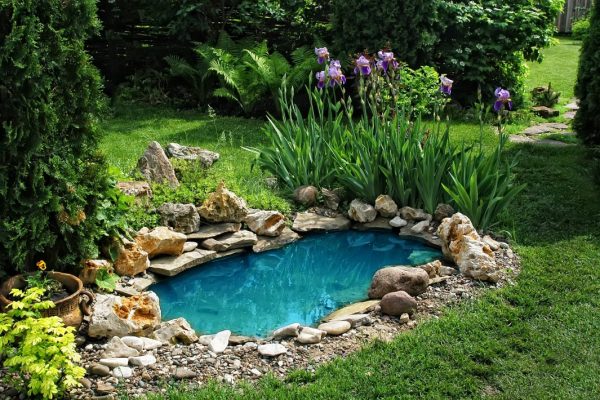
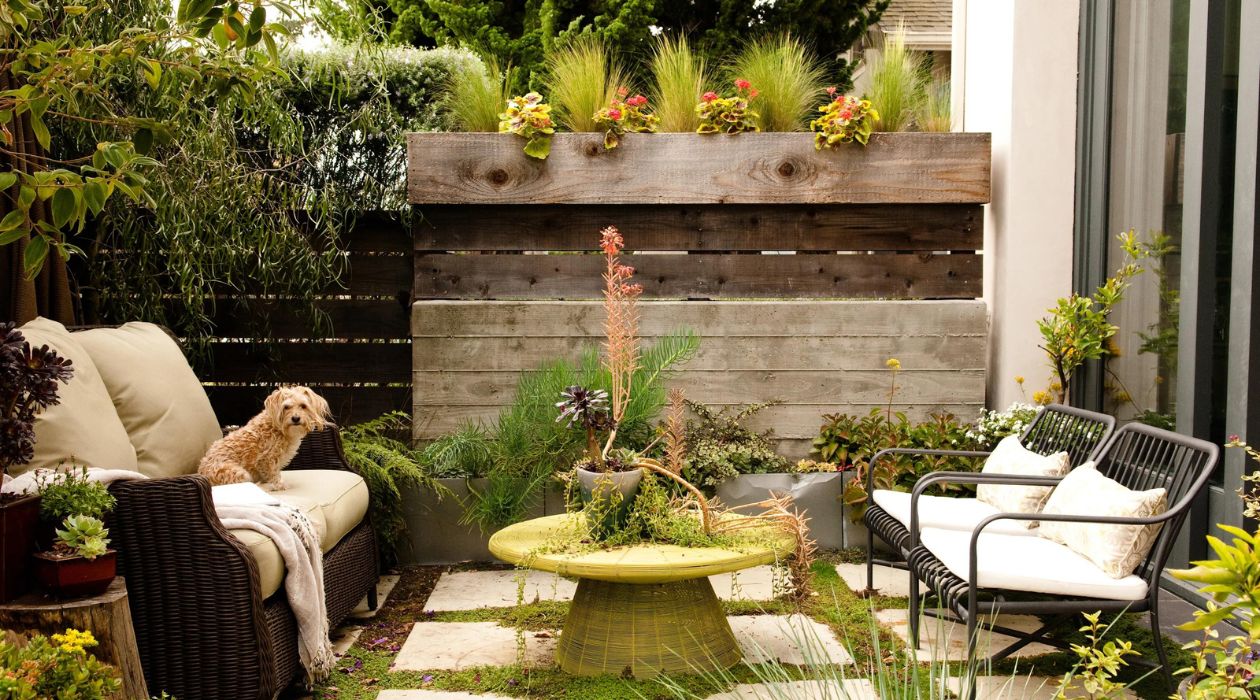
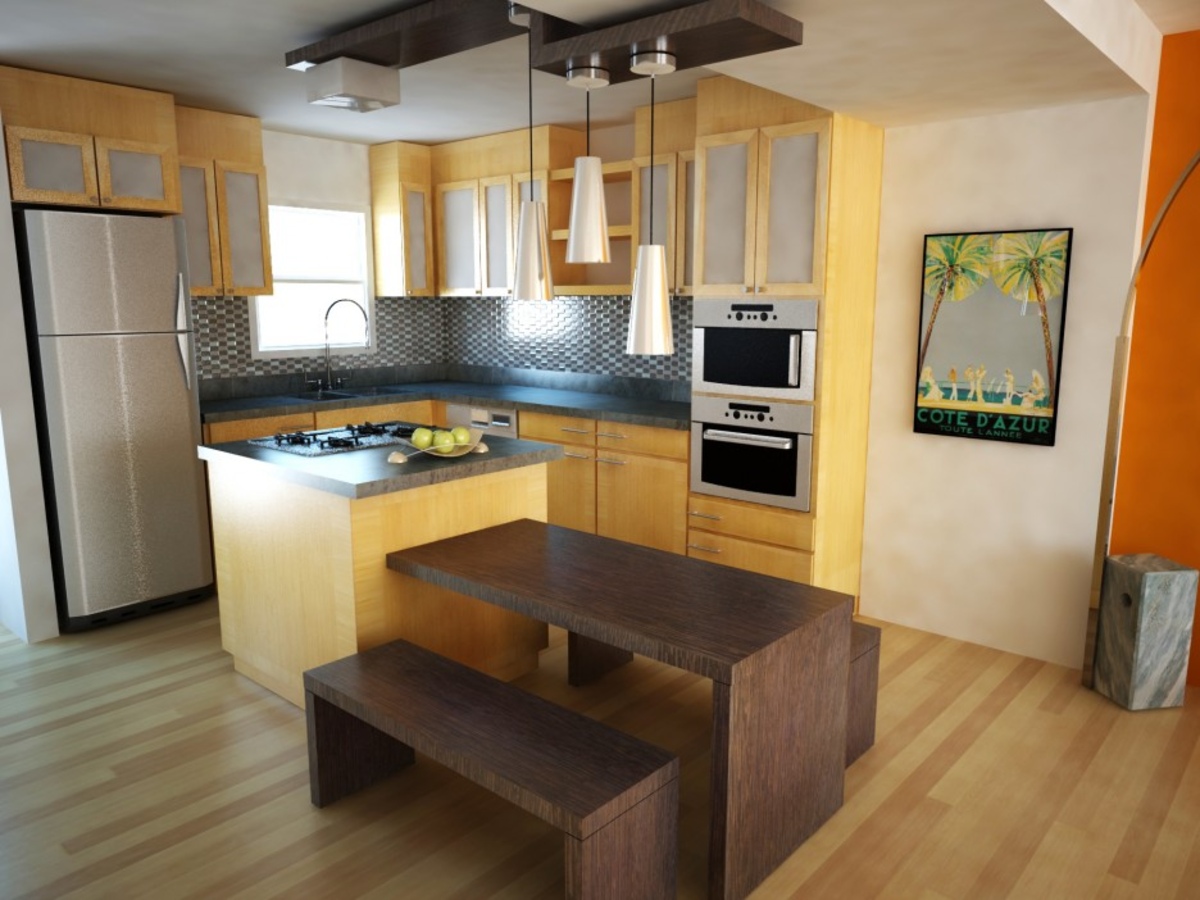
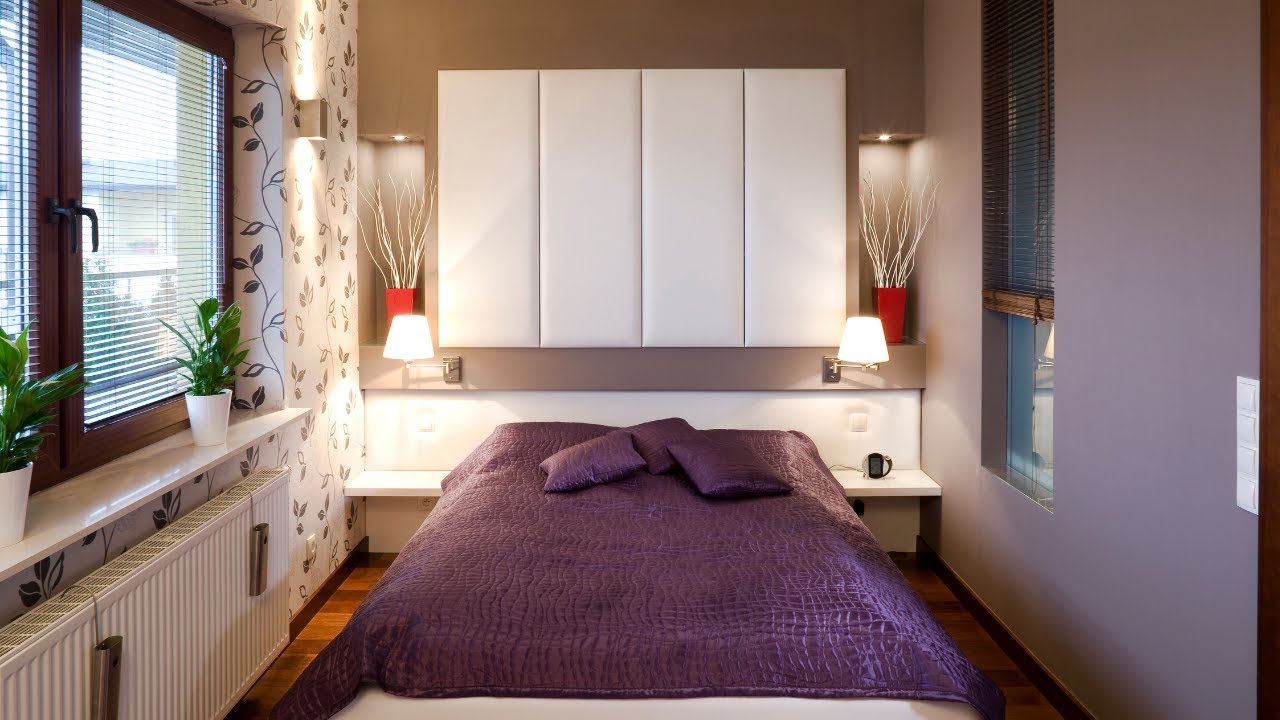

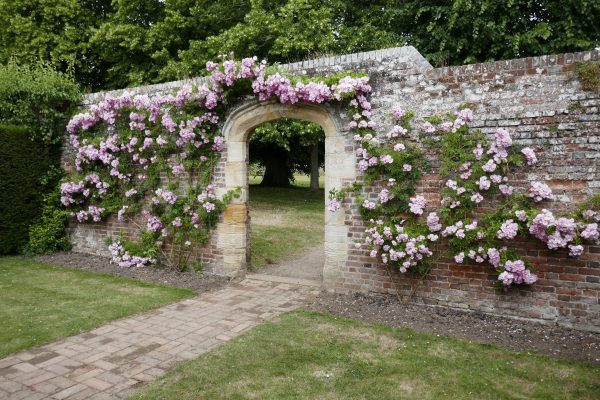
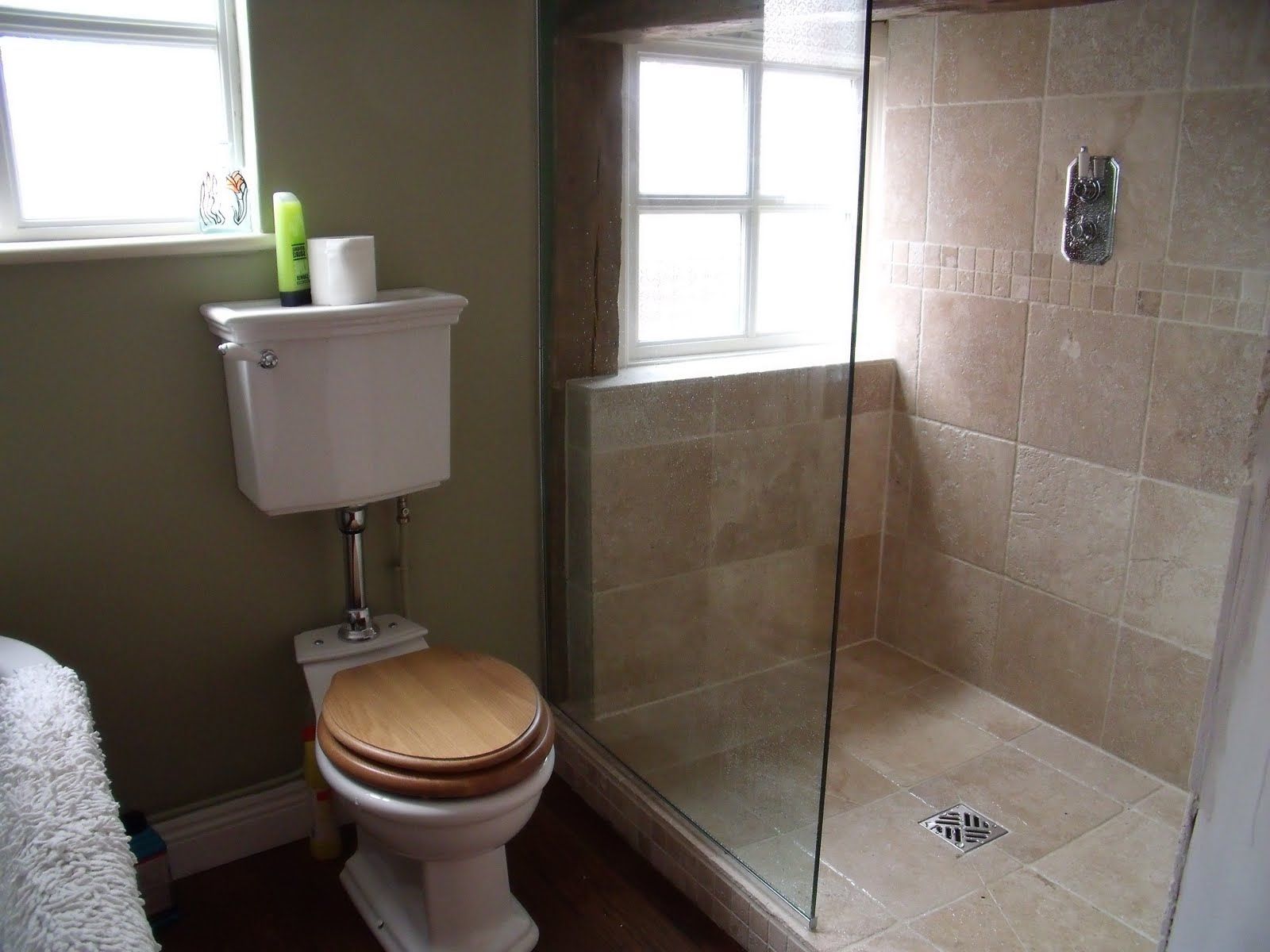
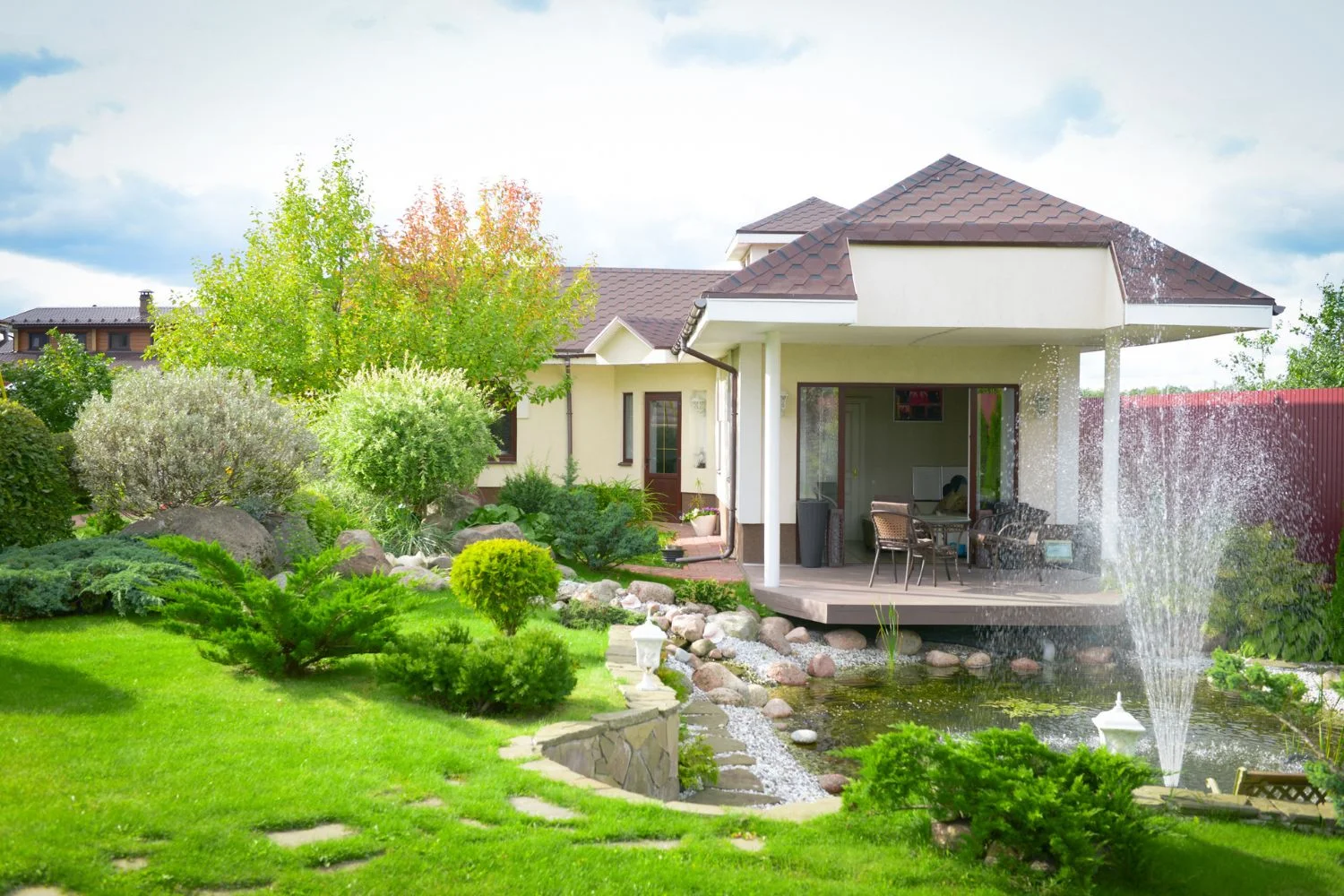

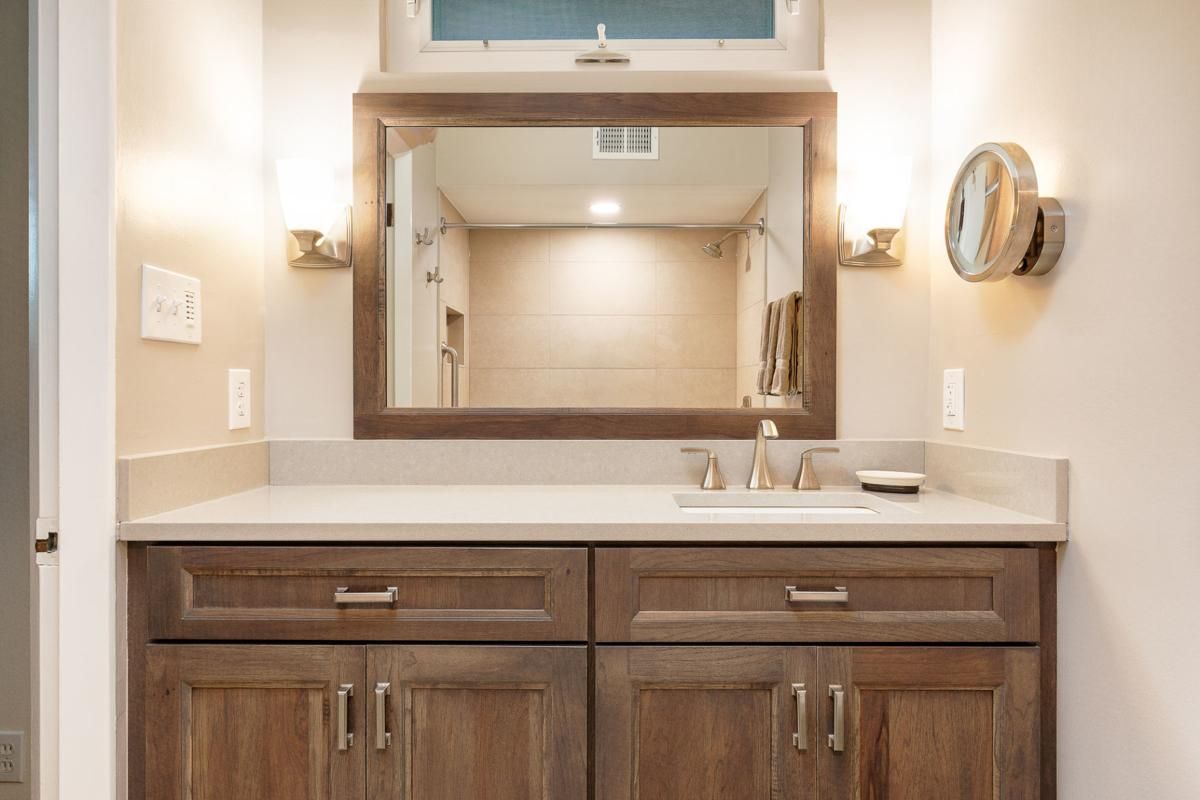
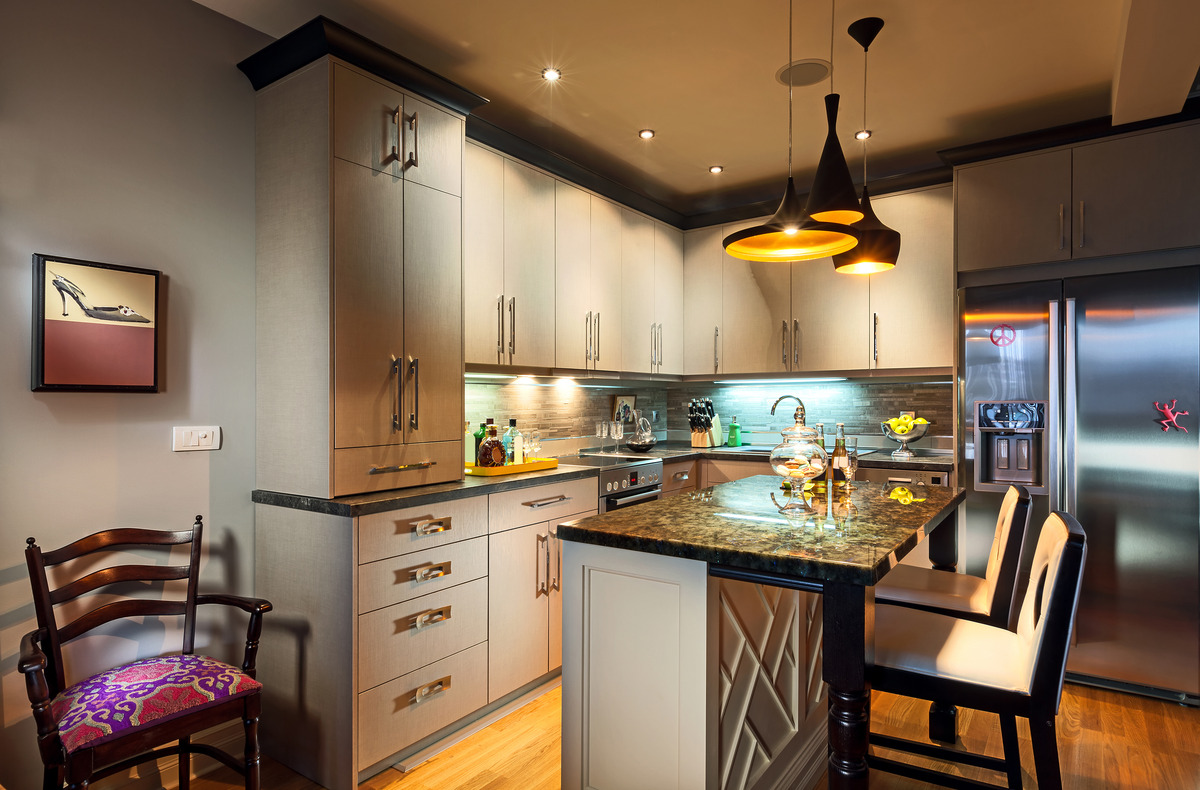
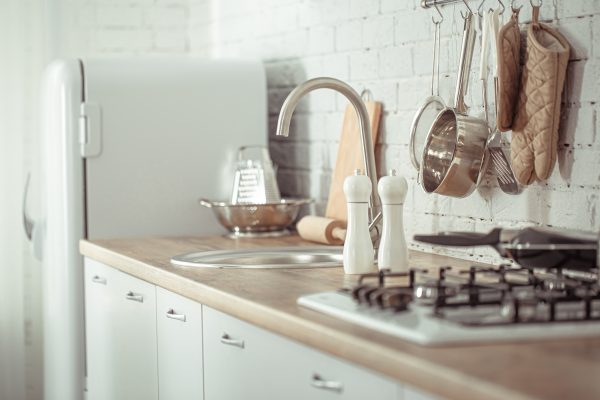

0 thoughts on “Small Backyard Landscaping Ideas: 15 Designs For Tiny Spaces”